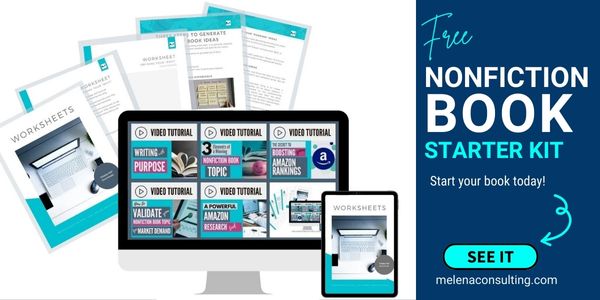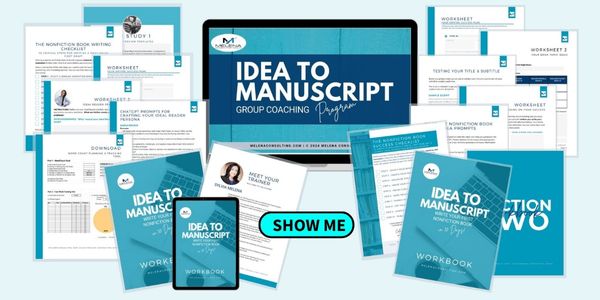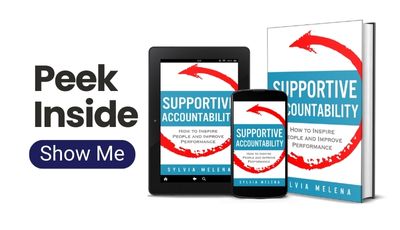It’s unfortunate.
Many book authors struggle to sell their books and make an impact because their writing completely misses the mark.
I’m not talking about writing style or grammar, although they’re certainly important. I’m talking about writing that doesn’t resonate, writing that doesn’t move the ideal reader’s heart and mind.
But who is your ideal reader?
That’s what I answer in this article.
Your Ideal Book Buyer v. Your Ideal Reader
There’s a vital distinction between your Ideal Book Buyer and your Ideal Reader. Understanding this distinction will help you sell more books and craft a magnetic message.
Your Ideal Book Buyer is someone who will buy your book, and this encompasses multiple people.
However, your Ideal Reader is a single person. It’s the one person your perfect book topic is for.
Why You Need to Know Your Ideal Reader
Pinpointing your Ideal Reader crystallizes your message.
Understanding your Ideal Reader on a deeper level makes your message more impactful, more powerful, and more personal. It speaks to this person’s needs, fears, and aspirations. Most importantly, it solves a specific problem.
“The Lie of the Wide Net”
Many nonfiction book authors are afraid of narrowing their book’s message to one person because they believe in “The Lie of the Wide Net.”
They believe that if they cast a wider net, they increase their chances of catching more fish. But this is lie. In fact, the opposite is true.
If you speak to a wide audience, your message loses focus, and you don’t reach anyone. Your words don’t resonate, not even with the one person who desperately needs the solution in your nonfiction book.
If you want to impact lives and make a difference, your message from beginning to end must be compelling. You can only achieve this by speaking to the one person whose life you want to change. And you start by building your Ideal Reader Persona.
The Ideal Reader Persona
The Ideal Reader Persona is a meaningful description of the one person your book is perfect for. The three key elements for building the Persona are demographics, psychographics, and the book buying journey.
In this article, I’ll go over demographics and psychographics. I cover the book buying journey in this article.
Demographics
Demographics tell you “who” your Ideal Reader is.
Nailing the demographics helps you form a mental picture of your Ideal Reader. The more vivid this image is, the more your writing comes to life and makes a difference.
When you type your first draft, imagine this person sitting in front of you and write as if you’re speaking and sharing your wisdom. Conversational language is engaging.
Demographics include things such as:
- Age,
- Income,
- Occupation,
- Educational level,
- Geographic location,
- Gender,
- Ethnicity,
- Marital status, and
- Much more.
Focus on Meaningful Demographics
If you’re not careful, you can get bogged down with demographics. Focus on the demographics that matter for your nonfiction book.
Not all demographics are essential for your book. Depending on how you position your book, some demographic data is vital, whereas other is useless.
Let’s take my leadership book, Supportive Accountability, as an example. Marital status doesn’t matter. The person can be married, divorced, or single. However, none of these marital statuses will significantly affect my messaging.
What matters most for Supportive Accountability is to pinpoint my reader’s occupation so I can adapt my message to the person’s leadership level and experience.
My message will need to change significantly, whether I’m speaking to an entry-level supervisor, a middle manager, or an executive. Therefore, nailing the occupation is crucial.
There may be another leadership book where marital status matters based on the book’s positioning. For instance, it could be a book about balancing the demands of the leadership role with the spouse’s needs.
How you position your book will determine which demographics are critical. Likewise, your demographic research will inform your positioning. Demographics and positioning go hand in hand.
Determine which demographics are paramount to your messaging and focus on those. Otherwise, you can get bogged down and overwhelmed trying to identify unnecessary demographics that don’t help you craft a more compelling message.
Psychographics
Psychographics are the psychological motivators impacting your Ideal Reader’s book buying and reading decisions. They tell you “why” your Ideal Reader will buy and read your book.
Psychographics include but are not limited to:
- Values,
- Beliefs,
- Hopes,
- Dreams,
- Aspirations,
- Concerns,
- Fears, and
- Pain points.
Psychographics “humanize data by describing the human characteristics of consumers, that may have a bearing on their response to products, packaging, advertising, and public relations efforts.” [i]
Psychographics are a lot more powerful than demographics because they motivate. They drive your Ideal Reader’s decision to buy your book and take action.
How to Find Your Ideal Reader
Finding your ideal reader doesn’t have to be complicated. Here are five ways you can gather demographic and psychographic data:
- Leverage Your Existing Clients. Pull and analyze existing client data. Conduct exiting client polls.
- Conduct Research on Amazon. Use the book reviews of top books in your niche to distill client demographics and psychographics.
- Research on Social Media. Look for clues about demographics and psychographics in relevant social media groups and posts.
- Other People’s Websites (OPW). Read the comments in niche’s OPW to glean important demographic and psychographic information.
- Your “Real” Perfect Client. Model your Ideal Reader Personal after your “real” perfect client for your book’s topic. This is a fast and effective method. Why? Because you already have an excellent working relationship with this person, and you know he or she loves and buys your work.
Understanding your Ideal Reader as a person gives you the insights you need to solve a problem, create a compelling message, and deliver the desired transformation through your book.
That’s impact.
……………………………………………………………………………………………………………….
Get Your FREE Nonfiction Book Starter Kit
Write Your Nonfiction Book in Just 30 Days!
About the Author
 SYLVIA MELENA is the Founder and CEO of Melena Consulting Group, a leadership and management consulting, training, and nonfiction book coaching company. She is also the international award-winning author of Supportive Accountability: How to Inspire People and Improve Performance and the former Vice President of the San Diego Book Awards Association. As an unknown author with zero platform, Sylvia’s first book gave her exposure in the Society of Human Resources Management HR Today, Entrepreneur, the Human Performance Association, My Quest for the Best, LEADx, Fit Small Business, and other outlets.
SYLVIA MELENA is the Founder and CEO of Melena Consulting Group, a leadership and management consulting, training, and nonfiction book coaching company. She is also the international award-winning author of Supportive Accountability: How to Inspire People and Improve Performance and the former Vice President of the San Diego Book Awards Association. As an unknown author with zero platform, Sylvia’s first book gave her exposure in the Society of Human Resources Management HR Today, Entrepreneur, the Human Performance Association, My Quest for the Best, LEADx, Fit Small Business, and other outlets.








